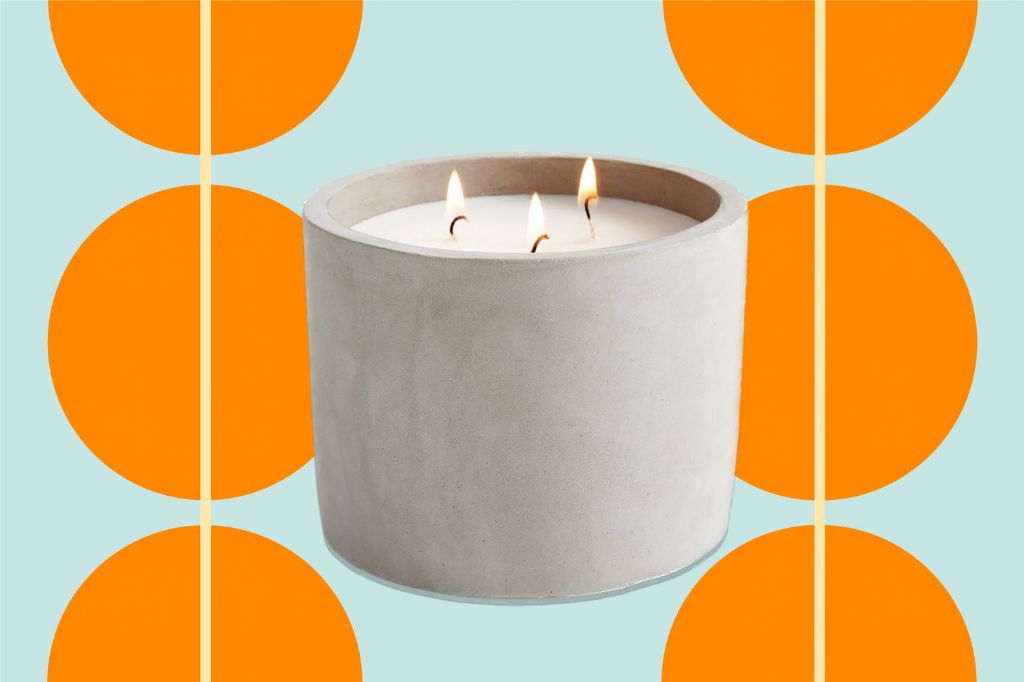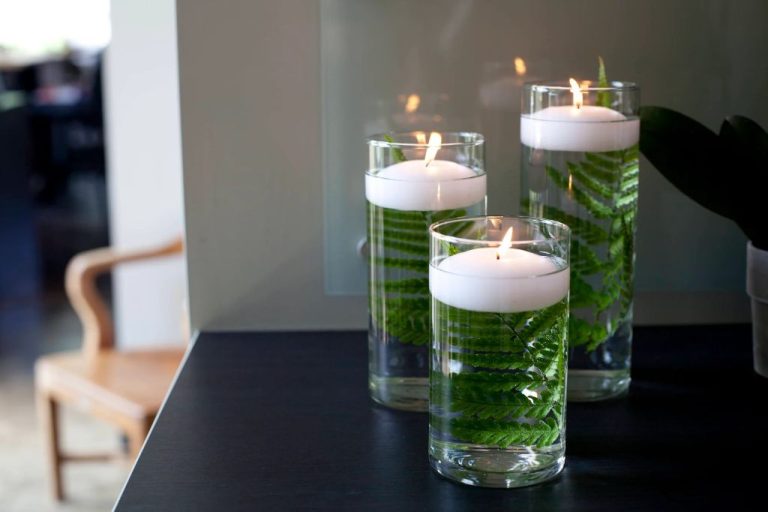Why Can’T You Burn Citronella Candles In The House?
What Are Citronella Candles?
Citronella candles are primarily used as natural mosquito repellents. The main active ingredient in citronella candles is citronella oil, which is derived from lemongrass. When the candle is lit, the oil is heated and releases a strong aroma that helps repel mosquitos and other insects. Citronella candles come in various forms like jar candles, votive candles, citronella torch fuel, citronella coils, and more. The purpose of burning a citronella candle, in any form, is to fill the surrounding area with the scent of citronella in order to deter biting insects like mosquitoes from the space.
Source: https://www.lumabase.com/blog/2020/06/citronella-candles-how-citronella-scented-candles-work/
Why People Burn Citronella Candles Indoors
Many people choose to burn citronella candles indoors in an attempt to repel mosquitos inside the home. The strong citronella scent that the candles emit is believed to help mask human scents that attract mosquitos and other bugs. While this may provide some level of mosquito deterrence outdoors, burning citronella candles inside is not an effective way to keep mosquitos out of the house.
Others may burn citronella candles indoors because they enjoy the pleasant, lemony aroma. The scent can make indoor areas smell fresh and clean. However, there are safer options for home fragrance that don’t come with the risks of burning citronella candles indoors.
Dangers of Burning Citronella Candles Indoors
While citronella candles are marketed as a natural way to repel mosquitos outdoors, burning them indoors can actually pose some health and safety risks. According to the Suffolk Candles blog, citronella candles release chemicals into the air when burned, including volatile organic compounds (VOCs) like particulate matter, carbon monoxide, and soot.
The particulate matter and soot emitted from citronella candles can reduce indoor air quality and irritate lungs if inhaled. The CDC warns that the elderly, children, and those with chronic conditions like asthma are most susceptible to these effects. The carbon monoxide released is also dangerous since it is odorless and can be fatal in high concentrations.
Experts recommend avoiding burning any candles indoors for extended periods of time. The occasional use may be fine, but prolonged exposure to candle emissions should be prevented through proper ventilation and limited burn times. Ultimately, citronella candles are designed for outdoor use and may jeopardize health if burned regularly inside.
Impact on Indoor Air Quality
Burning citronella candles indoors can degrade indoor air quality. The smoke released from citronella candles contains small particles that can irritate the eyes, nose, throat, and lungs, especially for those with asthma or allergies.
According to a New York Times article, the smoke from citronella candles contains chemicals like toluene, benzene, and nicotine, which are known irritants and can exacerbate respiratory conditions. The soot released can also trigger allergy and asthma symptoms.
For optimal indoor air quality, it’s best to avoid burning citronella candles inside the house. Ventilation can help circulate and dilute the smoke, but does not eliminate the health risks entirely. Those with asthma, allergies, or other sensitivities should be especially cautious about indoor use.
Risk of Fire Hazard
Citronella candles pose a serious fire hazard if used indoors due to their open flame. The National Fire Protection Association advises to never leave burning candles unattended and to keep them away from combustibles like curtains, furniture, bedding and decorations (The Dangers of Citronella Candles and Bug Sprays). Accidental fires can occur easily if the candle gets knocked over by children or pets, or if combustibles are placed too close to the flame.

Citronella candle fires flare up rapidly when water is added in an attempt to extinguish them, making accidental fires much more dangerous (Citronella Candle Hazard). The open flame also continues to release soot and smoke even after being blown out, leaving behind hot embers that can easily ignite if contacted.
For these reasons, experts recommend using citronella candles only in outdoor, open areas away from anything flammable. They should never be left burning unattended or used indoors due to the serious risk of accidental fires.
Ineffective at Repelling Mosquitos
Despite being marketed as mosquito repellents, research shows that citronella candles are largely ineffective at keeping mosquitos away, especially indoors or in well-ventilated areas. According to a study by the Centers for Disease Control and Prevention, candles containing citronella oil do not provide significant protection from mosquitos (Source).
This is because the scent from citronella candles cannot compete with other attractive scents and carbon dioxide that draw mosquitos toward their target. In indoor and outdoor spaces with adequate air flow, the citronella scent disperses rapidly and cannot reach a high enough concentration to repel mosquitos (Source).
Additionally, research shows that mosquitos can become accustomed and tolerant to the smell of citronella after a period of exposure. So citronella candles may seem ineffective if used repeatedly in the same area (Source).
Better Alternatives
There are safer and more effective options for repelling mosquitos and filling your home with pleasant scents than burning citronella candles indoors.
To keep mosquitos out, make sure windows are fitted with tight screens and run fans or air conditioning. You can also use mosquito netting around beds or over patios and porches. For a chemical-free repellent, place fans strategically around outdoor gathering areas – mosquitos struggle to fly against a breeze.
For a lovely scent in your home, use an essential oil diffuser instead of candles. Diffusers distribute essential oils like lemon, lavender, eucalyptus and lemongrass safely through the air without an open flame. They provide aromatherapy benefits and come in many styles to suit your home. Just be sure to use 100% pure essential oils and clean the diffuser regularly.
With these safe alternatives, you can enjoy fresh scents and fewer mosquito bites without the risks of burning citronella candles indoors.
Safety Tips
When using citronella candles, it’s important to follow safety precautions to avoid hazards.
First and foremost, citronella candles should only be burned outdoors. The smoke and chemicals emitted can negatively impact indoor air quality and pose health risks if inhaled (Source).
Be sure to properly extinguish citronella candles before leaving them unattended. Allow the wax pool to completely solidify, then gently press the wick into the wax to prevent reignition (Source).
For indoor mosquito repellent, use safer alternatives like LED candles that don’t have an open flame. The LED light mimics a real candle but doesn’t burn anything, eliminating fire and air quality risks.
Summary
To recap, there are several key reasons not to burn citronella candles indoors. First and foremost is the serious fire hazard they pose. Citronella candles have an open flame, making them prone to tipping over, igniting combustible materials, or otherwise causing dangerous fires. This risk is too high to justify their use indoors.
Additionally, burning citronella candles inside degrades indoor air quality through the release of particulate matter and chemicals. This can cause or worsen respiratory issues for household members. Finally, citronella candles are ineffective at repelling mosquitos when used indoors. The smoke does not spread sufficiently when contained within a home.
For these reasons, it’s highly recommended to avoid burning citronella candles or any open flame inside the house. Seek safer, more effective mosquito deterrents and make sure to extinguish and properly dispose of citronella candles if used outdoors.
Sources
Safety and Health Topics: Indoor Air Quality. United States Department of Labor, www.osha.gov/SLTC/indoorairquality. Accessed 1 March 2023.
Allen, Jeffrey. Dangers of Citronella Candles. Placer County Air Pollution Control District, www.placerair.org/news/outdoorburning/citronella-candles. Accessed 1 March 2023.
“Citronella Candles: Don’t Get Burned.” Consumer Reports, www.consumerreports.org/cro/2012/05/citronella-candles-don-t-get-burned/index.htm. Accessed 1 March 2023.
“Citronella Candles: 5 Things You Should Know.” Cleveland Clinic, my.clevelandclinic.org/health/articles/22457-citronella-candles. Accessed 1 March 2023.



